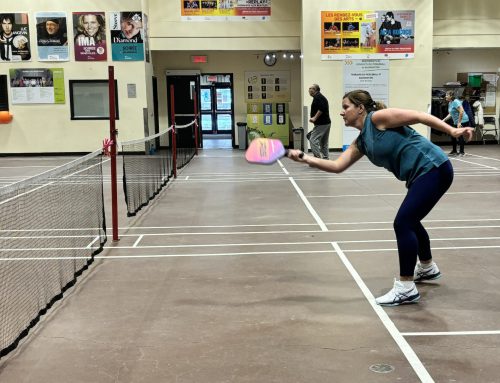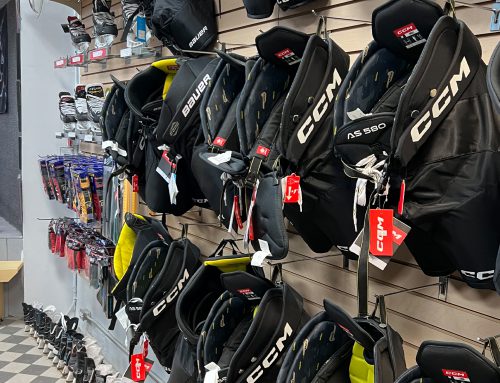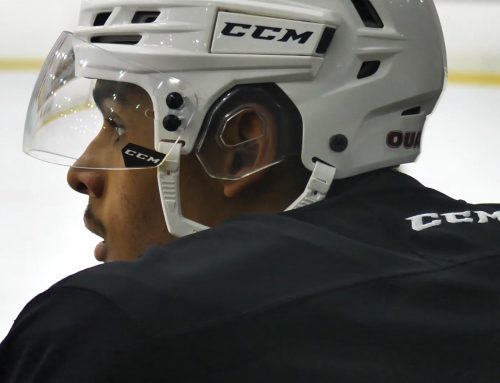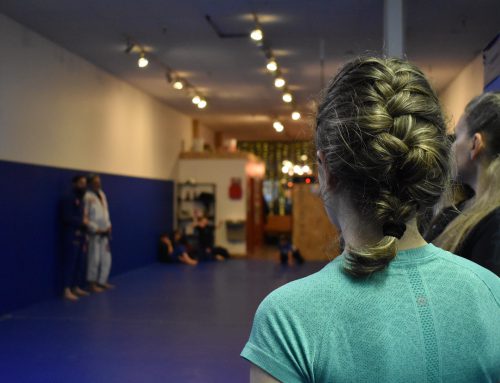BY Juliette Palin & Jad Abukasm
Bright blue skies stretch further than the horizon. It’s a brisk, clear day with a temperature of -10 C, with a fresh snowfall from the day before—perfect conditions for skiing.
Myriam Rouleau stands atop Mount Logan, one of the few mountains in Quebec that reaches above 1,000m. The scarce trees around are covered in white, glimmering snow. Here, they’re called ghosts.
“This first expedition [on Mont Logan] gave me the itch for touring. After that, I knew I wanted to continue practicing on my own,” says Rouleau.
Three days of intense climbing and sleeping in small wooden shacks on the way up each night have led up to this moment: the big descent all alpine tourers await.
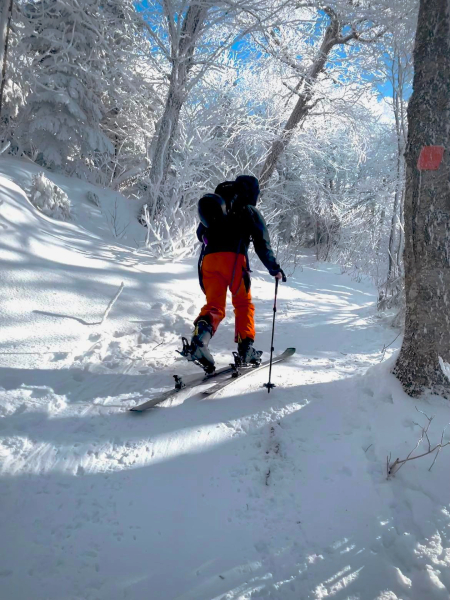
Alpine tourers have the freedom to climb anywhere they want (within legal limits), thanks to specialized equipment. Photo by Alexandre Morin.
Alpine touring does involve some downhill skiing, but the key difference in touring is the ability to climb the mountain thanks to special equipment.
That includes ski skins—an adhesive membrane allowing the ski to cling to the snow and gain traction—and special boot bindings that allow the heel to lift off the ski—the “free heel.”
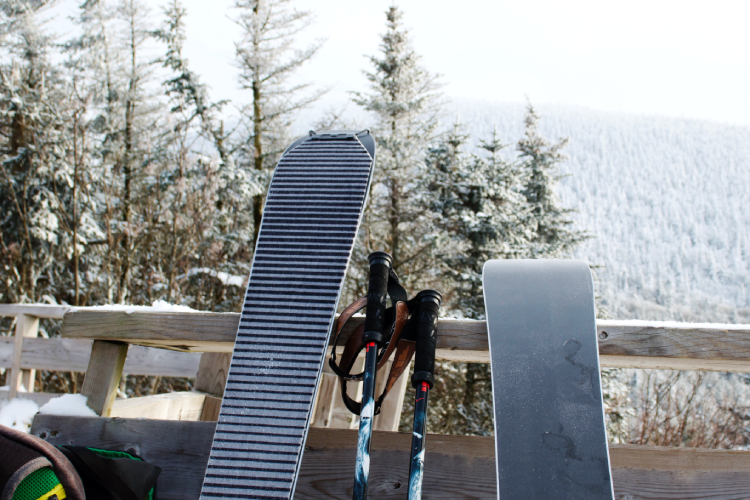
Ski ‘skins’ (left) are clipped onto the ski and aim to give the skier enough traction to avoid slipping in the snow. Photo by Juliette Palin.
“An entire day of going downhill, in the fresh powdery snow. Every skier here feels on top of the world, you can hear quick shouts of joy echoing through the trees,” says Rouleau.
Rouleau started ski lessons at the age of three. But it was thanks to her father that she discovered alternative ways of skiing, first with telemark—another form of back-country downhill skiing—and eventually, alpine touring. The two went on their first big touring expedition in 2019, trekking through the Chic-Choc mountain range, specifically Mount Logan, a renowned touring destination on the Gaspé Peninsula.
Rouleau confesses that in her experience, touring isn’t always as tranquil as it once was. The recent uptick in popularity has made it hard to enjoy the sport she once considered an uncommon practice.
“Sometimes, you show up in the woods ready to go, and you end up going up [the mountain] behind a line of people,” says Rouleau.
For her, defeats the purpose of the sport—which is to be free and alone in the vast wilderness.
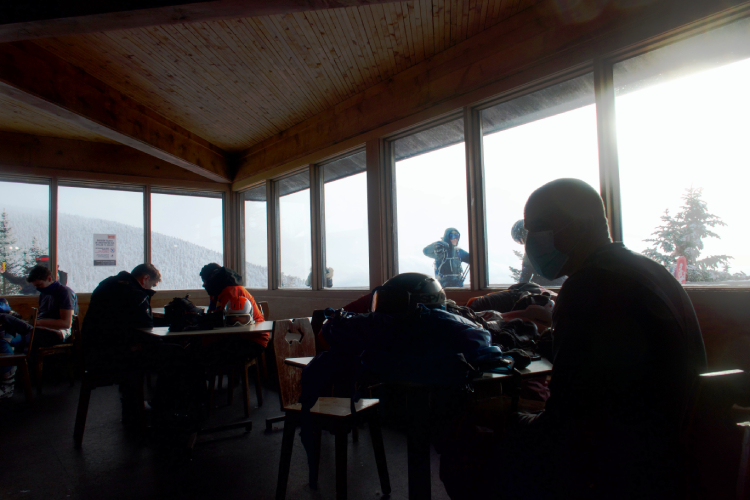
On this day, skiers gathered inside the 840m high chalet to escape the cold weather. This spot is where many tourers will take their mid-day break post climb, before descending. Photo by Juliette Palin.
Isabelle Falardeau, a researcher at l’Université du Québec à Trois-Rivières, notes that the sport originated in Europe.
“In Scandinavia, they used a type of ski with skins on the bottom to get around since they needed to go up mountains. But after a little while—human curiosity being what it is—they quickly realized it was fun to ski down, too,” she says.
Falardeau explains that Québecois culture has long been tied to the skiing industry.
“In the Montreal region, we see that the development of the tourism industry is historically tied to the expansion of skiing and ski stations.”
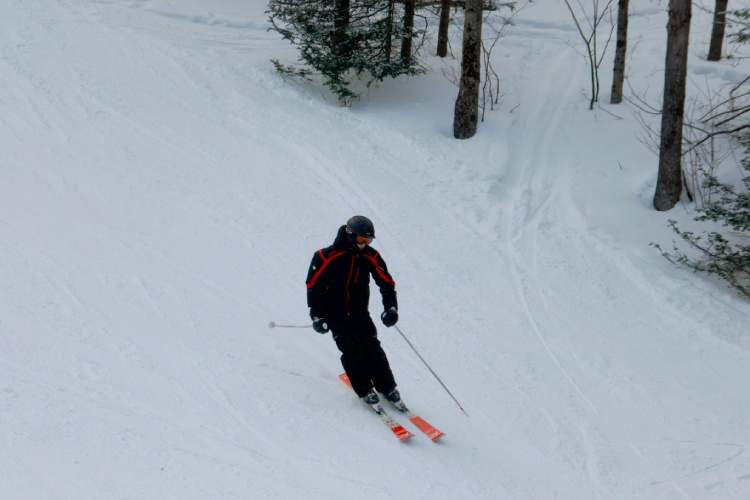
A downhill skier enjoys the plowed slopes and amenities provided by the Mont Sutton ski station. Photo by Juliette Palin.
Falardeau says that participating in winter sports is a tradition in Quebec, with certain trends gaining popularity at different times.
“We’re under the impression that alpine touring is the new ‘cool’ thing, the newly emerging sport, and it is. But it also has significant historic ties globally, and specifically in Quebec,” she says.
The rise in popularity of back-country winter sports comes hand-in-hand with new participants, and there’s often a learning curve for newcomers. This involves how to take care of the wilderness, and where to practice your sport.
Many Laurentian cross-country ski tracks are being blocked by private owners. Although the sport has been recognized as Quebec’s cultural heritage, private owners can legally block access to parts of the tracks that cut through their land. Video by Jad Abukasm.
Over the past 10 years, with the slow and steady growth of touring, manufacturers have ramped up their efforts to develop and market more affordable equipment.
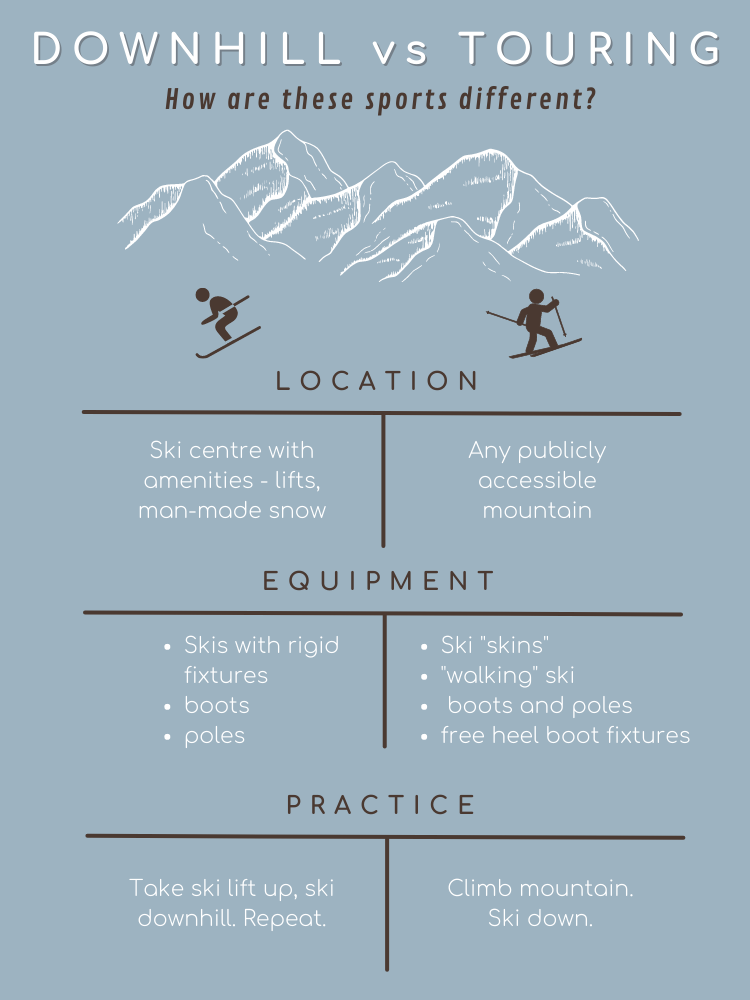
Find out the key differences between alpine downhill skiing and touring—is it something you may want to try? Media by Juliette Palin.
Although touring equipment remains expensive, the prices have dropped drastically in the past decade. Now, you can find used skis, skins and boots on Facebook Marketplace for under $1,000, while new equipment can cost between $1,500 and $4,000. That’s a fraction of what Falardeau remembers her parents paying for equipment when she was starting out.
The number of ski stations that offer touring season passes has also increased, with slopes that are regularly maintained, and amenities such as chalets, first aid support and more.
Mont-Sutton started selling touring ski passes three years ago, and has since continued to watch the sport grow.
“The industry is consistently growing, […] we can confirm there is a growing interest in touring,” says Jean-Michel Ryan, a representative at Mont-Sutton.
Sutton is already home to two dedicated slopes for tourers to climb, with a third in the works.
Ski hills are catering to alpine touring as more and more people discover the sport.
“There are interesting elements that contribute to why we choose a sport or modify the way we take part in a sport. It’s all related to our personal identities,” says Falardeau. Many feel that belonging to a fringe community of winter athletes defines them as individuals. Naturally, if your community switches sports, you will follow along.
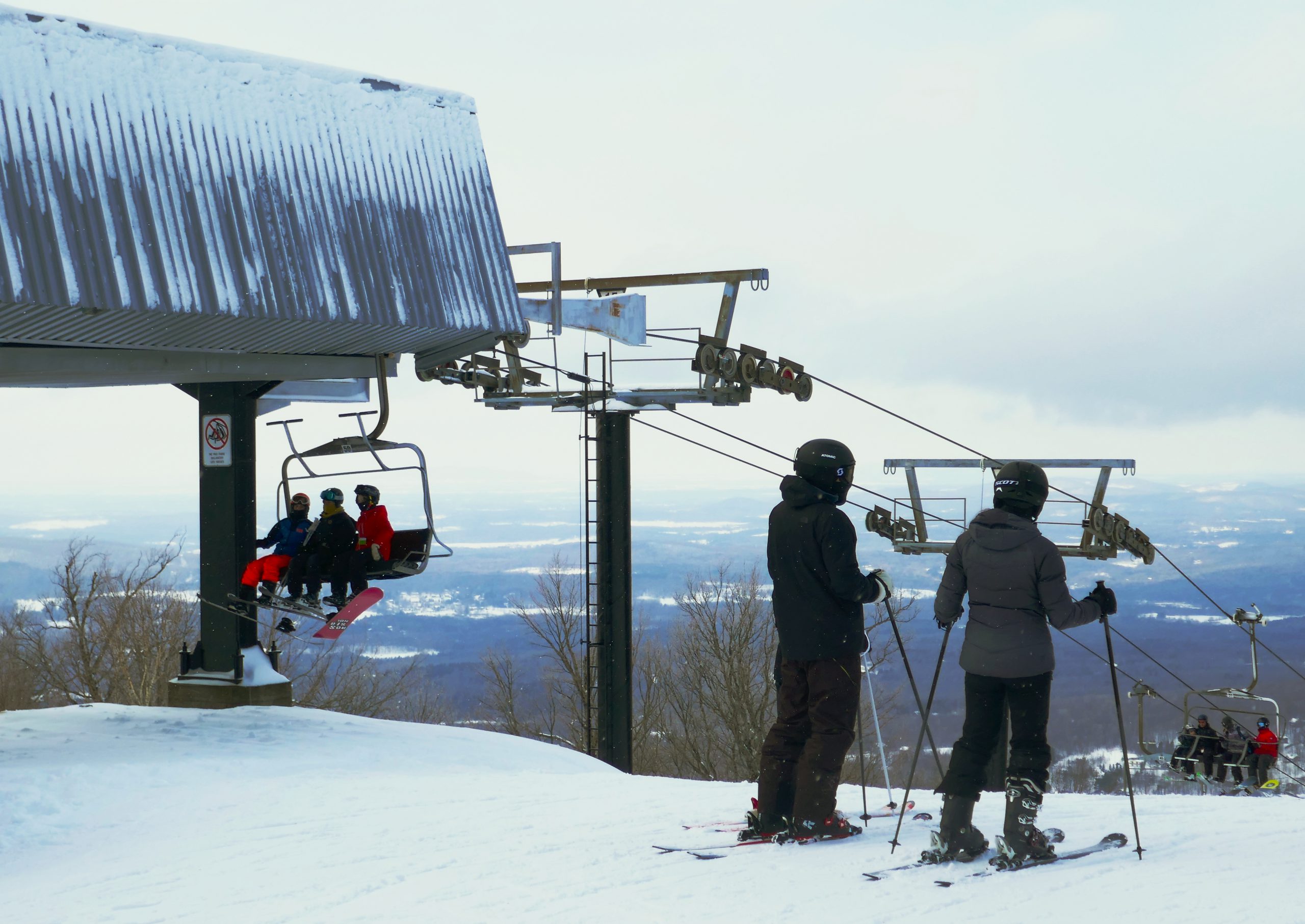
Skiing is often enjoyed in groups, whether that be your family or your friends. Here, a group of downhill skiers gather to discuss which slope to ski down. Photo by Juliette Palin.
While people have different reasons for picking up a new hobby, there is some common ground. “[Touring] allows skiers and snowboarders to grow their skillset, to evolve their practices,” says Falardeau.
Many skiers have cited another reason for their newfound love of climbing mountains with long sticks tied to their shoes: the need for independence.
Alexandre Morin is an experienced downhill skier turned alpine tourer. He spent his entire life on the slopes in skiing competitions and as a ski coach. Like many others, he felt his downhill skiing skills had reached a plateau, and was ready for a new challenge. Alpine touring gave him just that.
“I have been participating in winter sports my entire life, I love it,” he says. “They are so fun, so refreshing.”
But as the pandemic threatened to ruin his ski season, he decided to jump feet first into alpine touring. “Early last winter the ski stations were closed, we didn’t really know how [our ski season] would go,” says Morin.
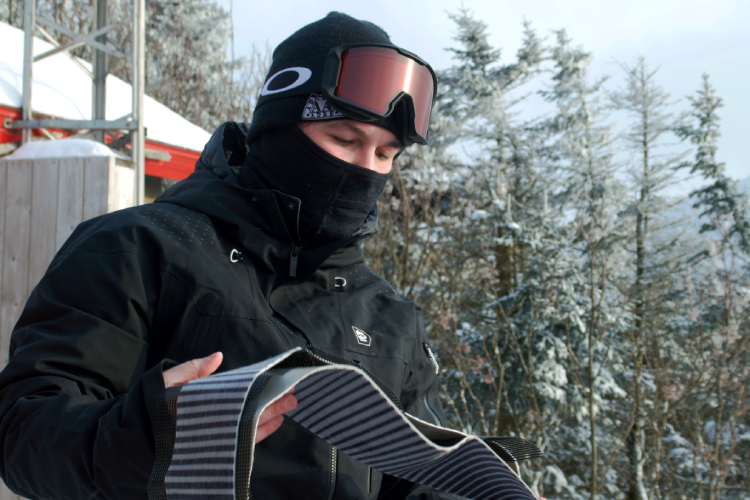
Alpine tourer at 840m chalet preparing his equipment for the descent. This involves taking off the ski ‘skins’, attaching your boot fixtures down and putting your boots in ‘ski mode’. Photo by Juliette Palin.
“Seriously, [alpine touring] really saved my semester last winter. I would be [in class] online, so I stayed at our cottage. Once my classes were done, I would throw on my equipment, climb up the mountain just in time to see the sunset, and then ski on home,” says Morin.
“What I really love about touring is the feeling you get when you arrive at the top of the mountain, you feel like you’ve accomplished something with your day. You climb, you’re sweating, hot, you gave it your all, worked for it, and your reward is the descent.”
However, alpine touring isn’t a sport for just anyone to pick up. There are some risks involved, specifically avalanches. In order to take part in bigger expeditions, it’s sometimes a requirement to have training in avalanche safety and prevention.
But that isn’t stopping the sport from picking up speed.
Despite her slight annoyance, Rouleau is excited to see the post becoming more popular. “I’m here for the de-democratization of [alpine touring]. I want it to be accessible to all.”
She only asks for all new tourers of the sport to take care of the land—learn how to keep it in order for other skiers to enjoy their wilderness outing.

